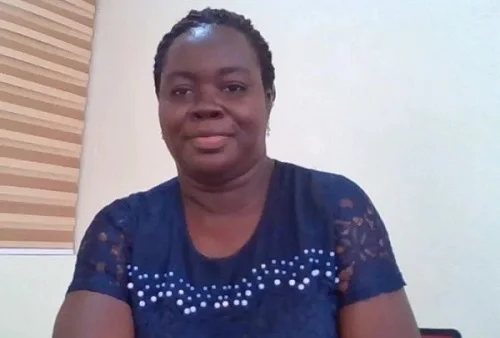Hot!
70 years of photography …Keta through the lenses of self-taught master cameraman, FK Tagbor

Frank Kodzovi Tagbor, is a self-taught photographer who started photography as a hobby whilst still in elementary (now basic) school.
When he finished Standard 7 (today’s BECE) in 1952, after a couple of years at Anlo State School having spent most of his schooling years at Dzelukope RC School, he started professional photography from the Tagbor family home at Ashigame, Dzelukope.
His was what would be called today a ‘table-top’ enterprise as his studio was a table with the legs covered with cloth serving as his ‘dark room’ where he developed and printed the photos.

At 92, FK Tagbor, looking back with nostalgia, says today’s photography is no ‘work’, as it does not involve much creativity, with all the latest technological developments and modern gadgets in use.
Background
FK Tagbor, was born on January 13, 1930, at Ashigame, Dzelukope to Mr. Augustine Kodzo Tagbor and Madam Theresia Dueyeye Klokpa. His paternal grandmother was Madam Philipine Agbodzakey and the maternal grandmother, Madam Sarah Nagoti Mensah.
He started school at Dzelukope RC school but along the line started playing truant and dropped out of school to join a fishing company because he did not only love fishing but could also make good money through fishing as a young man.
But as fate would have it, he had to return to school after an incident at sea that nearly cost him his life. Out of embarrassment because his mates and juniors had become his seniors he decided to continue school at Keta RC instead of Dzelukope RC also because Dzelukope RC didn’t have a Middle School at the time.
So he had to take an entrance exam for Keta RC as most schools in the vicinity had only Primary sections and pupils from those schools had to compete for the few vacancies available at Keta RC. He passed the entrance exams alright but was not admitted to Keta RC.
Photography
Disappointed but not discouraged, he opted for Anlo State School and it was there that he completed his Middle School in 1952. He passed the then Standard 7 or Middle School Leaving Certificate.
Whilst at State School as a pupil, he bought a pinhole camera and started taking pictures of friends free of charge. He had the pictures developed at one, Mr. Adjorlolo’s studio at Keta.
His photography work was further enhanced by holiday jobs he undertook at the Keta Diocese’s printing press, St. Michael Press, within the St. Peter Claver Parish at Dzelukope. The press used to print both textbooks and religious material for the schools and churches under the Diocese.
After completion, he was fully employed at the St. Michael’s Printing Press. He first started as a handyman, doing cleaning, painting among other odd jobs. He was taught painting by a Reverend Father and moved on to become a binder as the press printed most of the schoolbooks, hymnals like Dzifomor, religious books (Dzifosafi) for the Keta Diocese.
It was a good job as wages were paid bi-weekly and even apprentices got monthly stipends (FK appreciated this gesture so much that when he also got apprentices, he was paying them stipends monthly too.)
Whilst at the Press he got access to some catalogues and saw some cameras on offer so he ordered a Billy One camera (a folding one) which in those days one could order from overseas and pay on delivery through the post (COD, Cash On Delivery—3 months for delivery) and so he took delivery of the camera after paying to the Post Office.
Commercial business
His real commercial photography took off from that point. This he did side by side with his work at the Press while the house at Ashigame, was his studio. One of his uncles, the late Emmanuel Tagbor took him to Accra and to a studio, JFC, where he would later take the pictures for development and printing, and have them posted back to him.
He was doing all these after work and at the weekends when he did not go to work at the press. Eventually, St. Michael Press had to shut down due to its dwindling fortunes, and government taking over the printing and distribution of textbooks.
Unemployed and with no more regular income from St. Michael’s Press, FK had to fall on his photography, as full-time job and income earner but no longer as part-time job.
FK started developing the films and printing them himself from his ‘studio’ at home. Under a table was his darkroom but he could only print small sizes at best, postcard sizes, himself.
In all these, he didn’t learn photography from anybody but relied on the manuals that accompanied the cameras and other equipment he bought.
Fame
Apart from individual contracts, from elementary and secondary schools like Spaco, ZICO, Anseco, Ketascho, Busco, St. Anthony’s Hospital, Dzodze, his fame and good work went ahead of him.
He moved his studio from the family home at Ashigame to the late John King’s house by the main road opposite PWD. This was his very first formal studio.
In a smart marketing move, he contacted, German manufacturers and suppliers of photographic material, ‘Agfa’, through their agent in Accra to use their brand name for his studio. “Agfa Photos”, which became the household name of his studio.
Some of the individual wedding engagements he could remember were, Mr & Mrs. Tehoda, Mr and Mrs. Tsikplornu, Mr & Mrs. Sebuava etc Family, church and political events became part of the main album/catalogue of Agfa Photos.
The master, self-taught photographer now had to look for apprentices. The first person he got was a lady, the late Stella Hugh-Tamakloe who went on to join the, Information Services Department and had a scholarship for further studies in photography abroad.
Overall, close to 30 apprentices learned at the feet of the legendary FK of Agfa Photos fame. However, Apart from his son, Christian, who has taken over the business, the only apprentice still in business is Mr. Moses Adzaho under the tradename, “Uncle Smiles Fotos”.
Indeed, Keta Municipal, and the whole of Southern Volta’s “sights” for close to 70 years are likely to have been captured through the fingers, eyes and lenses of FK Tagbor.
By Spectator Reporter
Hot!
Swedru All Blacks back to winning ways, Roshan humble King Faisal

Sekondi Rospak FC made it eight wins in eight successive home games after three second-half goals from John Amoah, Joseph Ntow and Stephen Anthony Kofi. John Amoah opened the scoring in the 55th minute after a barren first half. Joseph Ntow added to the tally in the 56th minute before Stephen Anthony Kofi rounded things up in the 74th minute to give Rospak a 3-0 win over former Premier League side King Faisal.
Elsewhere at Swedru – leaders Swedru All Blacks humbled PAC Academy in an emphatic 2-0 win. Zayat Bubakari scored first for Swedru All Blacks in the 27th minute before Rudolf Junior Nana Kwasi Mensah made it 2-0 in the 34th minute. Swedru All Blacks are top of the table with 36 points – 4 points ahead of second placed Rospak FC.
Meanwhile, Former Premier League side Cape Coast Mysterious Dwarfs recorded their fourth successive home victory after beaten New Edubiase United 2-1 at the Robert Mensah Park. Enoch Odoom struck first for Cape Coast Mysterious Dwarfs in the 19th minute but Steven Asante equalized for New Edubiase United before halftime. After the interval, Godfred Eshun scored from distance in the 65th minute to help Cape Coast Mysterious Dwarfs secure all the points.
Here are the results in Zone Two

Hot!
Cervical Cancer alert: Avoid sex at early age

The Programmes Manager of Non-Communicable Diseases (NCDs) of the Ghana Health Service (GHS), Dr Mary Efua Commeh, has advised young girls to avoid sex at an early age.
This, she explained, will give the cervix the opportunity to mature before they become sexually active.
“You need to delay what we call the first sexual intercourse as much as possible to give the cervix the opportunity to mature before the person becomes sexually active,” she said.
Dr Commeh stated this in an interview with The Spectator in Accra on Tuesday as a part of the Cervical Cancer awareness month.
According to her, cervical cancer was the second leading female cancer in Ghana with a total of about 3,072 cases annually, and out of that, 1,815 deaths are recorded, representing more than 50 per cent.
She indicated that “If young girls are going to be sexually active, then you need to talk to your parents about being vaccinated.”
She explained that vaccinating young girls against human papillomavirus (HPV) has been found to be a very effective way of preventing cervical cancer.
“There are countries that started HPV vaccination years ago and they are not seeing any cervical cancers now because they would have eliminated most of the high-risk HPVs in their women. So if the high-risk HPV is not there, then obviously the results on cervical cancers are going to go down,” she added.
Dr Commmey said the HPV vaccination is recommended for young girls aged nine to 14 years, adding that it had been found to be highly effective, not just for cervical cancers but for other HPV-related cancers, such as anal cancers, cancers of the vagina, genital warts, amongst others.
She further elaborated that the idea is to put up a barrier before the HPV comes in and that once a young female encounters it, she is already protected.
She also mentioned that for cervical cancers, the main cause is called HPV infection, saying generally, all sexually active women acquire HPV at some point in their lives.
However, the Programmes Manager of NCDs at the GHS mentioned that the body has a way of clearing the HPV, explaining that it is a natural mechanism that goes on, unfortunately, there are a few women whose HPV persists.
Moreover, she noted that the numbers for Cervical Cancer tend to be much higher because at times, clients would wait, and try all sorts of medications before they finally report to the health facility saying “we actually lose some women before they get to the hospitals with over 75 per cent of the cases coming in its third and fourth stages.”
Dr Commey, therefore, called for public awareness while ensuring the availability of information for prevention and control.
By Jemima Esinam Kuatsinu







